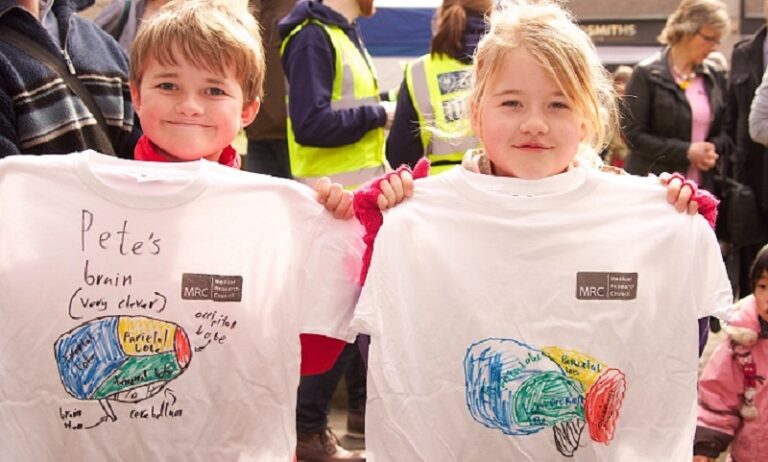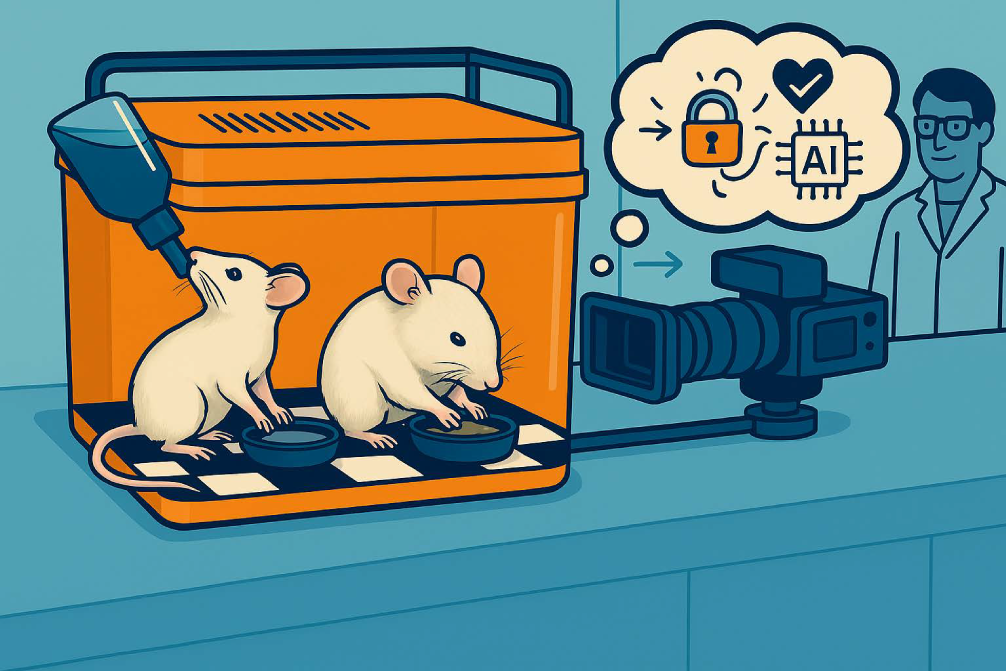Oxfordshire Science Festival 2015 We were in Oxford’s Bonn Square on Saturday 7 March, explaining how X-inactivation gives us tortoiseshell cats with colouring sheets and jigsaws!
Dr Mary Lyon, who first proposed her theory of X-inactivation while working at MRC Harwell, sadly passed away at Christmas. We therefore decided to base our stand at this year’s Oxfordshire Science Festival on X-inactivation, using the example of tortoiseshell cats.
Our stand was part of ‘Science in Your World’, which ran from 10am to 4pm on Saturday 7th March. We had two main activities – a tortoiseshell cat jigsaw and a colouring sheet puzzle. X-inactivation occurs in all female mammals. As they have two X chromosomes, they are at risk of having a double ‘dose’ of these gene products compared to males. To prevent this, one of the X chromosomes is inactivated early in development, effectively switching off the vast majority of genes. However, which of the two chromosomes is inactivated is random, and is different for each cell in the early embryo.
As this ball of cells develops, the original cells give rise to patches. All female mammals are therefore ‘mosaics’, with different X chromosome genes active in different parts of their body – as you can see with the orange coat gene in tortoiseshell cats. And once this X-inactivation has happened, it lasts for the animal’s entire life. For the jigsaw, we had two bags of plastic Xs and Ys, one for each parent.
First, we asked them to pull out one sex chromosome out of the ‘Mum’ bag and one out of the ‘Dad’ bag, and we asked them whether they thought the kitten was a boy or a girl, and what colour it would be. They tried this until they pulled out an orange X and a black X, the ingredients required to make a tortoishell cat. They then got to have a go at the jigsaw, turning over each part to find out what colour it would be and placing it in the correct position.
No two cats made during the day were the same, showing how the process of X-inactivation ‘turning off’ the orange coat colour gene on the X chromosome in different cells is random. Later in the day we could even show all of the other cats people had made, so they could see how each and every tortoiseshell cat was different. The colouring sheets gave them a problem to solve – if you have a Dad cat who is orange and a Mum cat who is black, what colour will the kitten be?
There were two sheets, one where the kitten was a boy and one where it was a girl. We helped them work it out, starting by showing the parents’ sex chromosomes would be and getting them to work out what the kitten’s ones would be. This led them to the answer of either a black male cat or a tortoiseshell female cat, which they used to colour in the cat outline.
When we asked if they’d ever seen a tortoiseshell cat, lots of children said their cat was one. This provided a great lead-in, as we could ask if it was a boy or a girl. They always said it was a girl, allowing us to explain why tortoiseshell cats are nearly always female. However, one man did raise the point that in very rare cases you can get an XXY cat, which would mean a male cat could have a tortoiseshell coat!
This led to talking about Mary Lyon’s work and how X-inactivation gives us a better understanding of X-linked diseases like haemophilia and Duchenne Muscular Dystrophy. It was a great day, with both families and adults trying the puzzles and asking some excellent questions. Thanks to all those who came along and took part!



